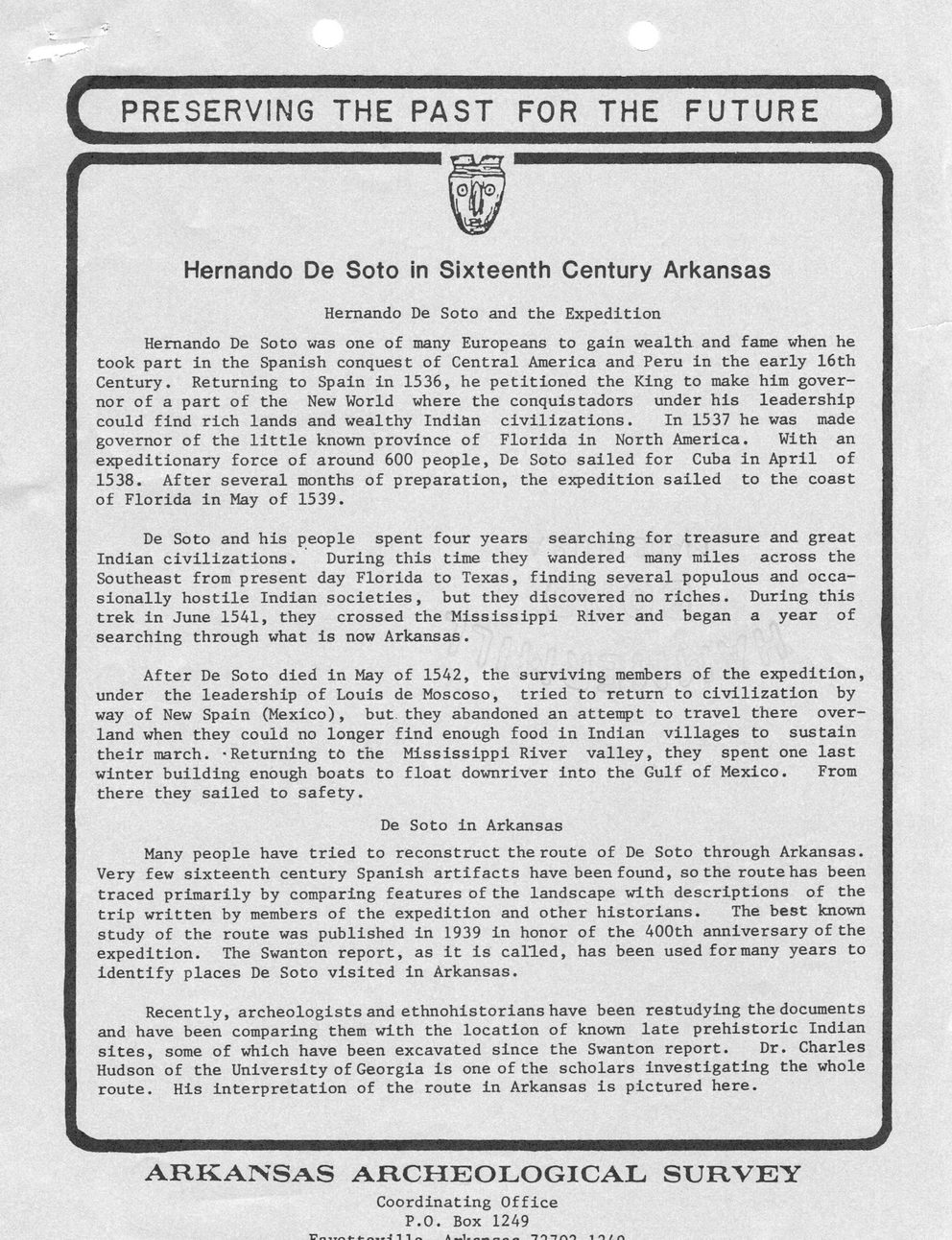This text was obtained via automated optical character recognition.
It has not been edited and may therefore contain several errors.
PRESERVING THE PAST FOR THE FUTURE Hernando De Soto was one of many Europeans to gain wealth and fame when he took part in the Spanish conquest of Central America and Peru in the early 16th Century. Returning to Spain in 1536, he petitioned the King to make him governor of a part of the New World where the conquistadors under his leadership could find rich lands and wealthy Indi&n civilizations. In 1537 he was made governor of the little known province of Florida in North America. With an expeditionary force of around 600 people, De Soto sailed for Cuba in April of 1538. After several months of preparation, the expedition sailed to the coast of Florida in May of 1539. De Soto and his people spent four years searching for treasure and great Indian civilizations. During this time they wandered many miles across the Southeast from present day Florida to Texas, finding several populous and occasionally hostile Indian societies, but they discovered no riches. During this trek in June 1541, they crossed the Mississippi River and began a year of searching through what is now Arkansas. After De Soto died in May of 1542, the surviving members of the expedition, under the leadership of Louis de Moscoso, tried to return to civilization by way of New Spain (Mexico), but they abandoned an attempt to travel there overland when they could no longer find enough food in Indian villages to sustain their march. -Returning to the Mississippi River valley, they spent one last winter building enough boats to float downriver into the Gulf of Mexico. From there they sailed to safety. Many people have tried to reconstruct the route of De Soto through Arkansas. Very few sixteenth century Spanish artifacts have been found, so the route has been traced primarily by comparing features of the landscape with descriptions of the trip written by members of the expedition and other historians. The best known study of the route was published in 1939 in honor of the 400th anniversary of the expedition. The Swanton report, as it is called, has been used for many years to identify places De Soto visited in Arkansas. Recently, archeologists and ethnohistorians have been restudying the documents and have been comparing them with the location of known late prehistoric Indian sites, some of which have been excavated since the Swanton report. Dr. Charles Hudson of the University of Georgia is one of the scholars investigating the whole route. His interpretation of the route in Arkansas is pictured here. Hernando De Soto in Sixteenth Century Arkansas Hernando De Soto and the Expedition De Soto in Arkansas ARKANSAS ARCHEOLOGICAL SURVEY Coordinating Office P.O. Box 1249

Native Americans AAS-Hernando-De-Soto-in-Arkansas